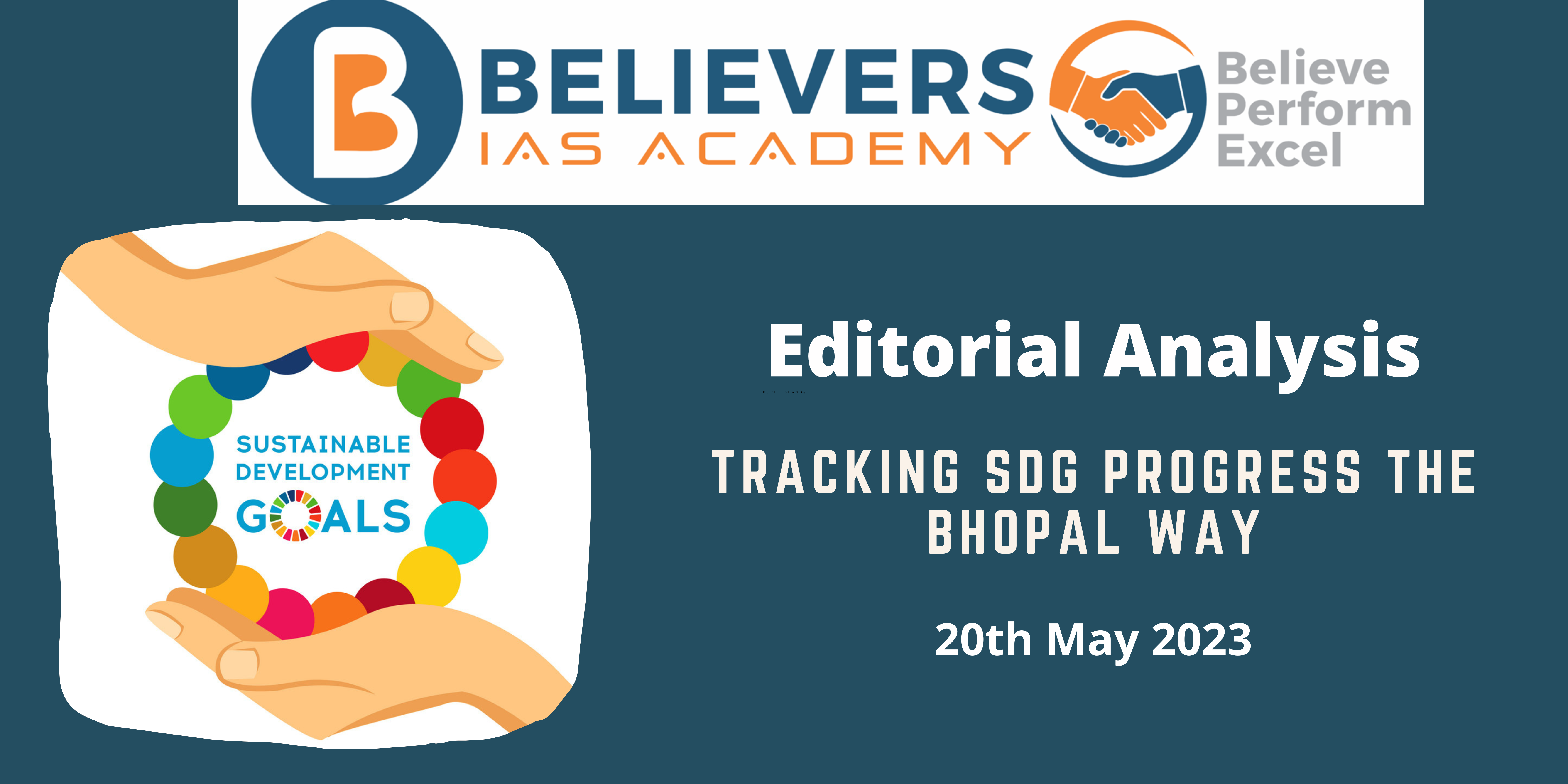Tracking SDG Progress The Bhopal Way
Context:
Following the publication of its Voluntary Local Review (VLR), Bhopal became the first city in India to join the expanding global movement for the localization of the Sustainable Development Goals (SDGs).
Voluntary Local Review (VLR)
- The VLR process asks local and regional governments to voluntarily evaluate how well they are doing at putting the 2030 Agenda and its Sustainable Development Goals (SDGs) into practice.
- Sharing Experiences: Through VLRs, local and regional governments can communicate the difficulties they have faced and the lessons they have learned in implementing the SDGs. This knowledge exchange encourages cooperation and education among many towns.
- New Partnerships: VLRs give local governments the chance to create new partnerships to support their SDG-related local actions and goals. These collaborations could cover the implementation gap needed to achieve the SDGs locally.
- Engagement of citizens in the review process is encouraged by VLRs for municipal governments. VLRs increase accountability and advance inclusive governance by involving citizens. Citizens take an active role in monitoring development and setting regional policy.
- VLR Reports: The production of VLR reports is the result of the VLR procedure. The complete review process, including the methodology employed, conclusions, and suggestions are documented in these papers. VLR reports are an important tool for stakeholders, legislators, and local governments.
- Voluntary National Reviews (VNRs) in addition: The goal of VLRs is to close the gap between regional realities and global policy contexts. Voluntary Local Reviews (VLRs) offer a localised viewpoint, educating policymakers at the national level about the difficulties and achievements at the local level, in contrast to Voluntary National Reviews (VNRs), which concentrate on national-level accomplishments.
- The absence of a centralised information hub that allows access to all VLRs, despite the growing interest in VLRs, highlights the need for one. The sharing of information and experiences across municipalities is hampered by this disparity.
- The VLR Lab’s goals are: To meet the demand for a centralised information hub, the VLR Lab was created. It acts as a platform for municipalities to be supported by improving access to information and the knowledge gained from earlier VLRs.
- Innovative Reporting: The VLR Lab is referred to as a “lab” since it supports a brand-new, cutting-edge, and effective method of reporting. It offers the information, tools, and case studies that local governments need to develop successful VLRs.
- Peer Learning and Accountability: Frontrunner cities are those that have performed or intend to conduct VLRs. The VLR Lab encourages peer learning between cities, allowing municipalities to gain knowledge from one another’s experiences. Promoting open reporting and citizen involvement also improves accountability to citizens.
- Better Policy Coordination: By bridging the gap between local realities and national policy contexts, the VLR Lab helps to improve policy coordination. It guarantees that local viewpoints are taken into account during the development of national policies.
Points to Ponder:
- Cities can use voluntary local reviews (VLRs) as a method to show how they are pursuing Sustainable Development Goals (SDGs) locally.
- By releasing its VLR, Bhopal became the first Indian city to join the global movement of localising the SDGs.
- According to its second Voluntary National Review (VNR), which was presented to the UN High-Level Political Forum (HLPF), India has made excellent progress in implementing and localising the SDGs.
- A National Indicator Framework (NIF), released by India’s Ministry of Statistics and Programme Implementation (MoSPI) to track the SDGs at the national level, contextualises the UN’s Global Indicator Framework to reflect India’s particular development trajectory.
- The SDGs have been localised by at least 23 governments and union territories in India who have created vision papers based on them.
- Cities are significant players in attaining the SDGs because participation from local urban stakeholders is necessary for 65% of the 169 targets.
- Cities have the freedom to select their priorities and convey their stories in a framework of their choosing thanks to VLRs.
- A VLR does not need to address every SDG in detail; instead, cities can concentrate on particular SDGs depending on their objectives and modify national metrics to take into account local conditions.
- The VLR in Bhopal involved cooperation between the local stakeholders, UN-Habitat, and the Bhopal Municipal Corporation.
- With a focus on basic infrastructure and resilience, Bhopal’s VLR matched 56 development projects to the SDGs across the pillars of “people,” “planet,” and “prosperity.”
- Under SDG 11 (Sustainable cities and communities), the VLR recognised Bhopal’s accomplishments in solid waste management procedures, public transit, and open spaces per capita.
- The VLR also noted areas where Bhopal needs to improve, including the availability of housing, air pollution, the capability of city planning, and the equal distribution of open spaces.
- Any city-level stakeholder may take the initiative as long as it is in line with the Agenda 2030 framework; VLRs are not just for local governments.
- The diversity of stakeholders involved in the VLR process globally is demonstrated by examples from Canterbury (UK), Dhulikhel (Nepal), Singra (Bangladesh), and Amman (Jordan).
- The essay exhorts additional Indian towns to imitate Bhopal’s example and use VLRs to present their efforts on a global stage utilising their unique narratives and frameworks.
- Indian cities may support urban innovations and partnerships in achieving the SDGs by taking part in VLRs.





